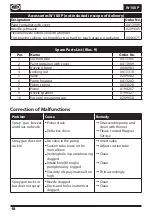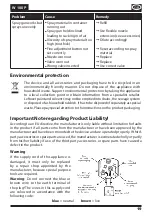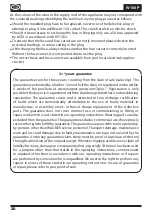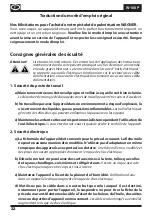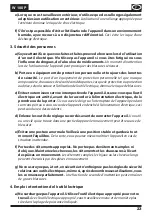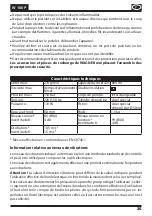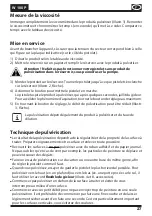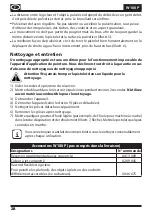
13
W 180 P
GB
f) If you cannot avoid using the tool in a damp environment, use a residual current
operated circuit-breaker.
Using a residual current operated circuit-breaker avoids the
risk of electric shock.
3. Safety of Persons
a) Be attentive. Pay attention to what you are doing and work sensibly with a
power tool. Do not use the tool if you are tired or under the influence of drugs,
alcohol or medication.
Just a moment of inattentiveness while using the tool can lead
to serious injuries.
b) Wear personal safety equipment and always wear safety goggles
Wearing
personal protective equipment, such as dust mask, non-slip safety shoes, safety helm
or ear protection, depending on the type of power tools, reduces the risk of injury.
c) Avoid accidental starting-up. Make sure that the electric tool is switched off
before you connect it to the power supply, pick it up or carry it.
Accidents can
occur if you carry the power tool while your finger is on the switch or if you connect the
power tool to the power supply which it is on.
d) Remove setting tools or wrenches before switching on the power tool.
A tool
or wrench that is in a rotating tool part can lead to injuries.
e) Avoid an unnatural posture. Ensure that you are standing securely and have your
balance at all times.
This ensures that you can control the tool better in unexpected
situations.
f) Wear suitable clothing. Do not wear wide clothing or jewellery. Keep your hair,
clothes and gloves away from moving parts.
Loose clothing, jewellery or long hair
can be caught in moving parts.
g) Do not lull yourself into a false sense of security and do not think yourself above
the safety rules for electric tools, even if you are familiar with the electric tool
following extensive practical experience.
Careless use can lead to serious injuries
in fractions of a second.
4. Usage and treatment of the electric tool
a) Do not overload the tool. Use the power tool designed for the work that you
are doing.
You work better and safer in the specified performance range if you use the
suitable power tool.
b) Do not use power tools whose switch is defective.
A power tool that cannot be
switched on or off is dangerous and has to be repaired.
c) Remove the plug from the socket before carrying out tool settings, changing
accessories or putting the tool away.
This precautionary measure prevents
unintentional starting of the tool.




















